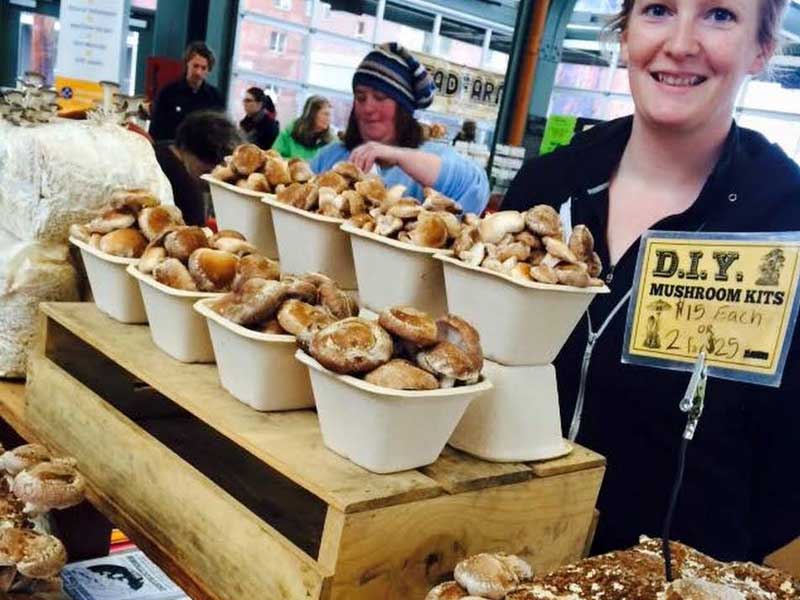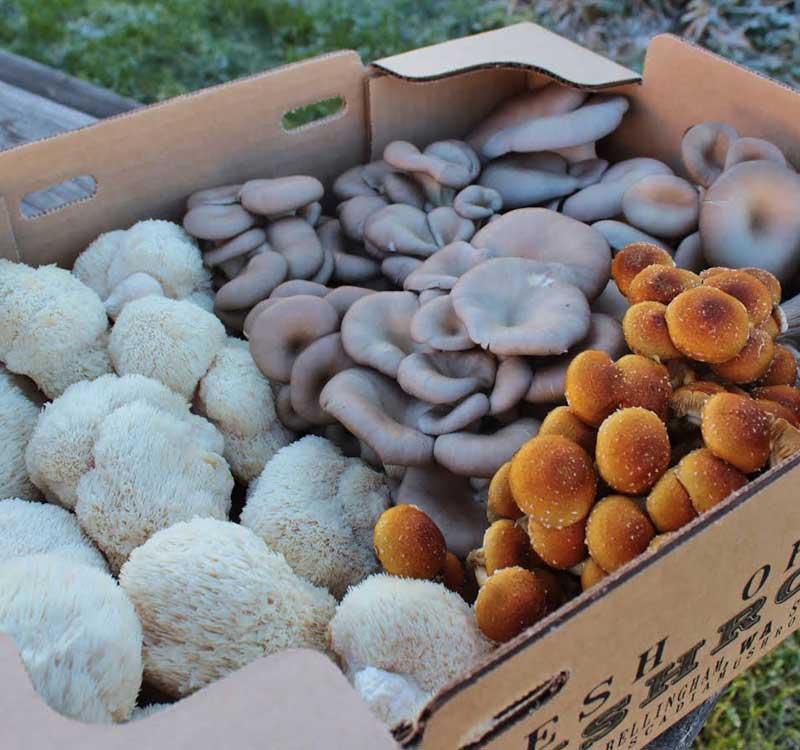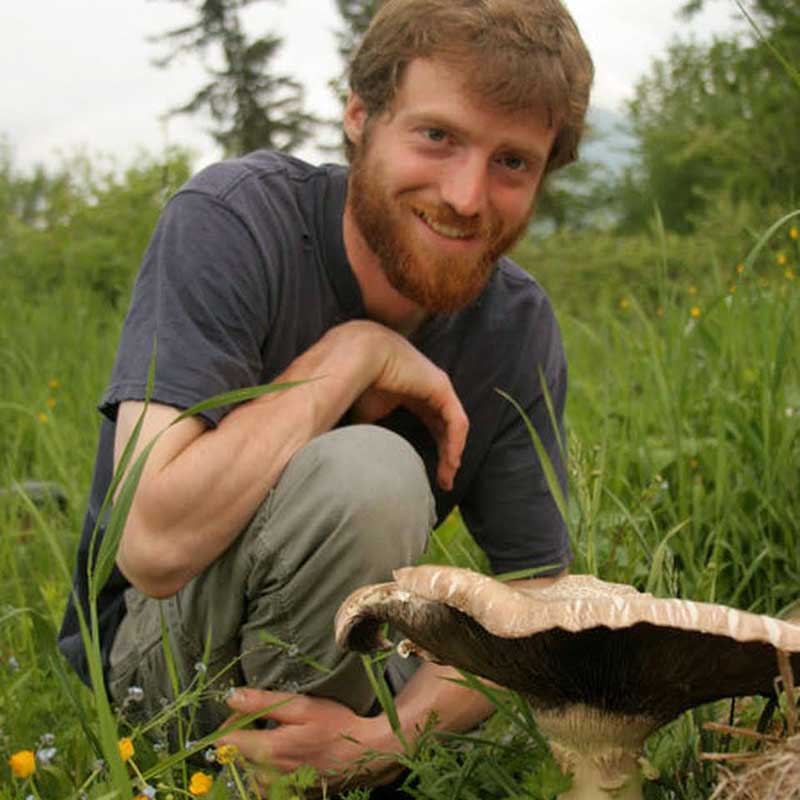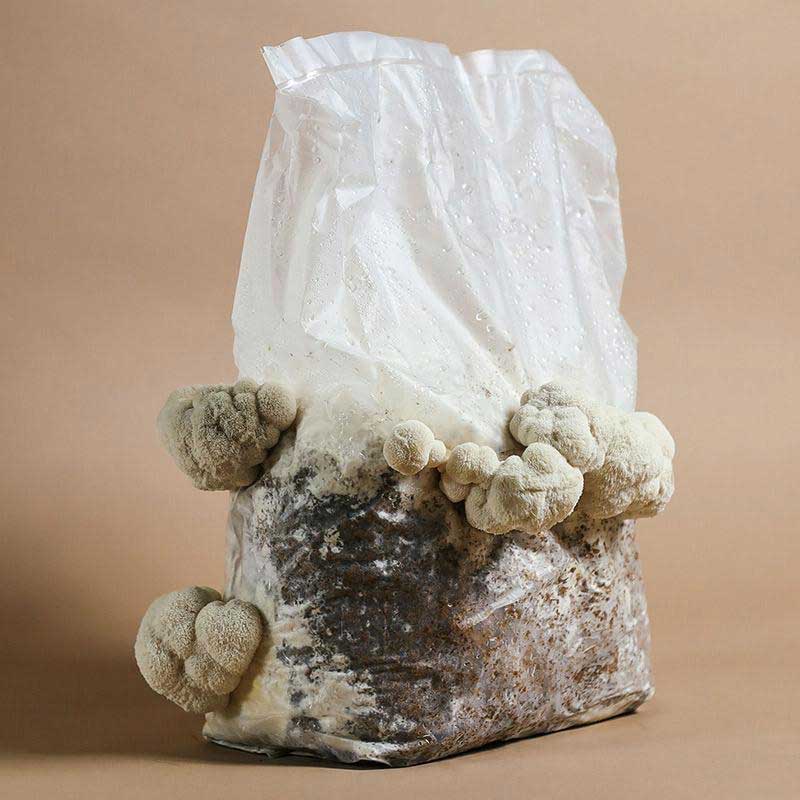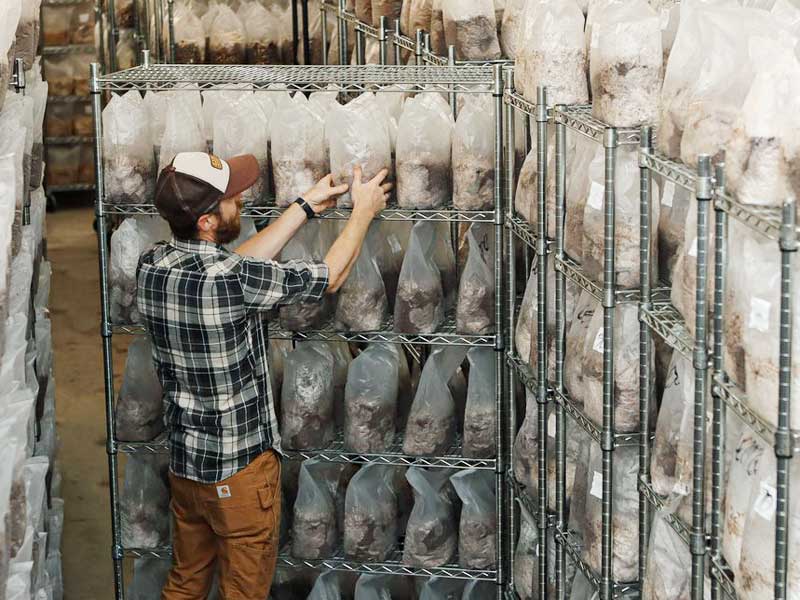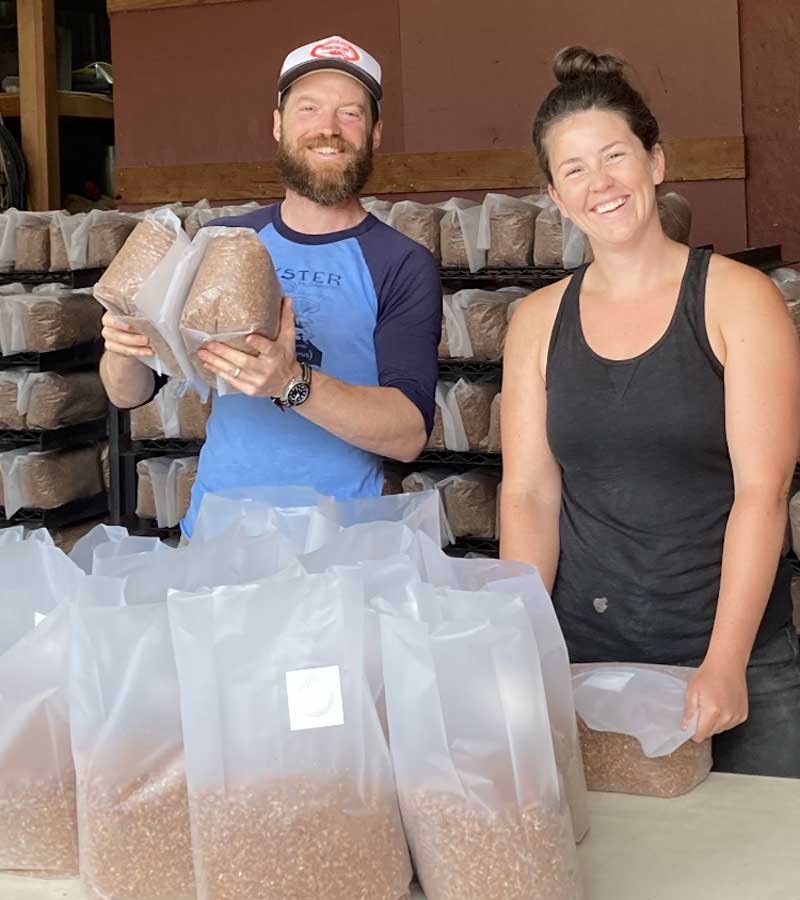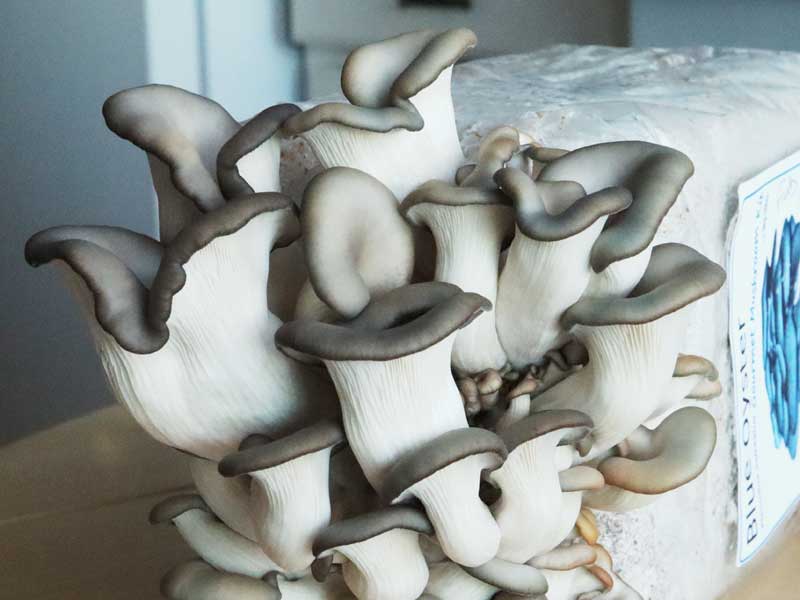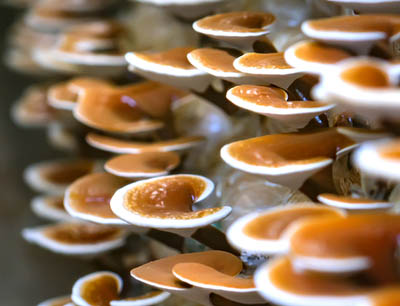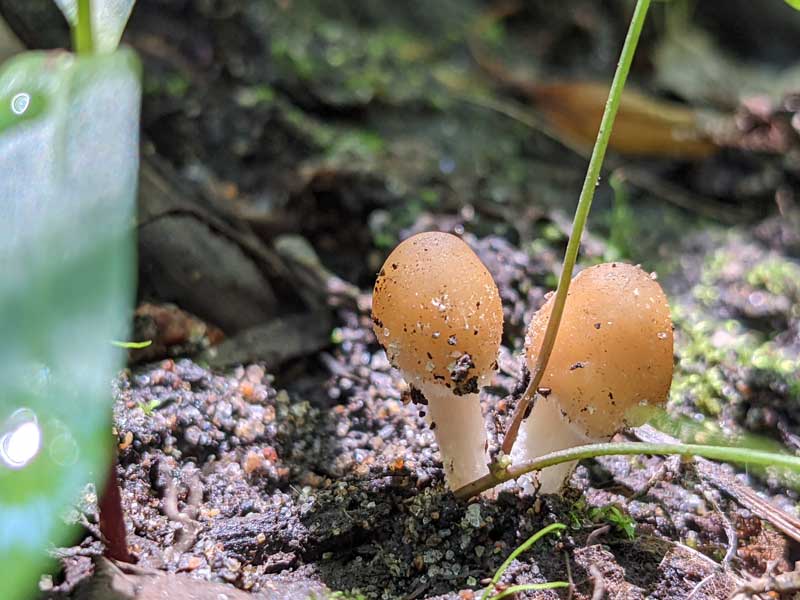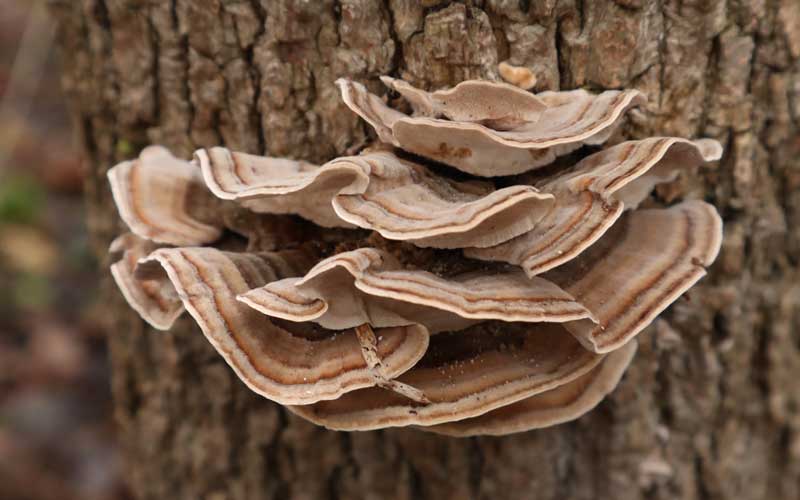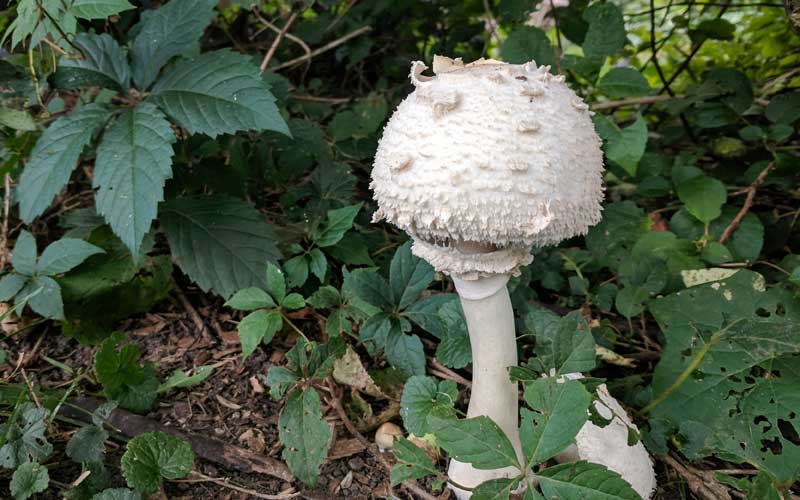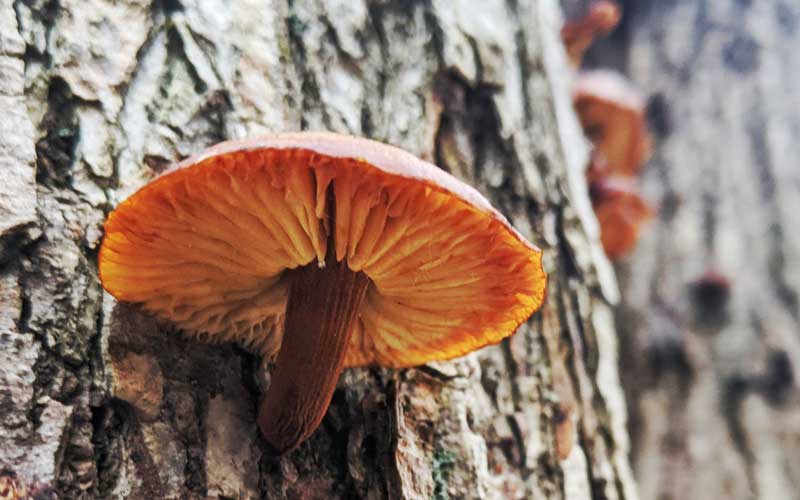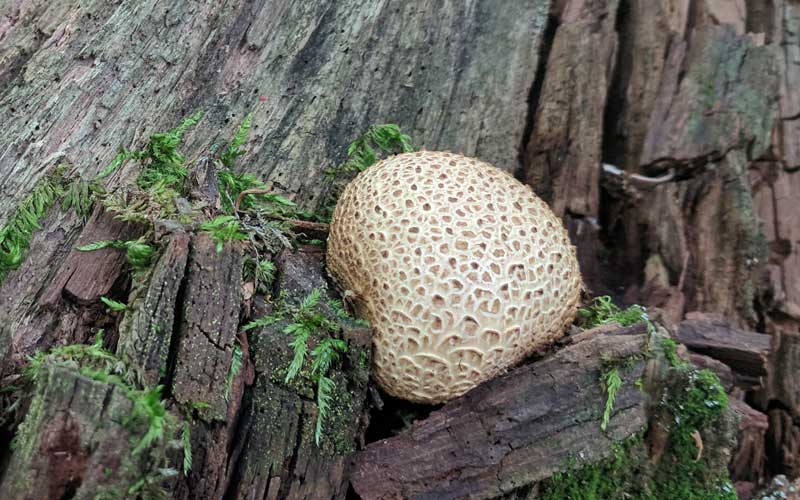- Home
- Find Mushrooms
- Farming
The wonders of mushroom farming – bringing fungi from the farm to the table.
In this post we’ll be looking at the work of Cascadia Mushrooms. This isn’t a paid promotion in any way. We just wanted to share with you how mushrooms are farmed, and the folks at Cascadia were kind enough to give us a peek at how they grow mushrooms at a commercial scale.
In the rain-soaked forests and emerald mountains of the Pacific Northwest, fungiculture is becoming a commercial powerhouse. Regional growers like Cascadia Mushrooms are bringing intensive fungi farming back to the local community, with sustainable practices and efficient technologies. And they’re happy to share their expertise with anyone who wants to learn how to grow edible mushrooms.
Most people give little thought to where culinary mushrooms come from. It’s easy to imagine flannel-shirted foragers tromping through the forest, harvesting them directly from nature.
In reality, very few commercial mushrooms are wild-harvested. Most edible and medicinal varieties sold come from the same place – a mushroom farm.
Finding a balance between scale and quality.
Large-scale industrial growers produce monocultural crops of common varieties in mass quantities (Cremini, Portobello, and Shiitake). They farm out each step of production to different facilities in separate locations, then ship their products all over the country. By the time their mushrooms hit your table, they can be week (or two) old. And many commercial growers source their spawn from China.
Not so with Cascadia Mushrooms.
Based in Bellingham, Washington (near the Canadian border), Cascadia farm employs a circular, environmentally friendly model. They pride themselves on growing the freshest, highest quality gourmet varieties available. And deliver their organic mushrooms to market within a day of harvest. Because fresh-picked mushrooms are the best!
At Cascadia, everything that’s picked in a week, gets sold that week – ensuring the highest quality, optimal flavor, and peak nutrient value.
Regenerative fungiculture.
Using insulated greenhouses and temperature-controlled labs, Cascadia keeps every aspect of growing mushrooms on site, to optimize production and minimize fossil fuels.
Every ingredient is certified organic and sourced regionally, including the grain and sawdust in their substrate. No chemicals or pesticides are used. Start to finish, nothing goes to waste at Cascadia farm. Spent substrate is recycled as biowaste, used in garden compost or nutritious livestock feed. Even the plastic bags in which mushrooms grow are recycled locally.
Using regenerative agriculture, Cascadia farm produces 800 to 1,000 lbs. of gourmet mushrooms every week, year-round – For wholesale, retail, restaurants, and farmer’s markets. They also sell fresh boxes online, dried mushrooms, and grow-kits.
Organic mushroom farming, from the ground up.
Cascadia Mushrooms’ Founder, Alex Winstead, began nurturing his passion in college, growing mushrooms in his basement while earning a degree in mycology at Evergreen State.
His love of fungi progressed into a business, selling mushrooms at farmer’s markets. Northwest Mycological Consultants (NMC), in Corvallis, Oregon, helped Alex get started, providing blocks, seed, and industry knowledge for his fledgling farm.
Founded in 2005, Cascadia’s mission is to feed the community with the best quality mushrooms possible, and educate the public about fungi’s healing powers. They offer farm tours, host workshops, and provide professional consultations to growers wanting to learn the trade.
When his clientele expanded to restaurants, Alex began focusing exclusively on specialty varieties in high culinary demand.
His farm grows seven varieties – oyster mushrooms (King, Pearl, and Pink), Reishi, Lion’s Mane, Pioppino, Shiitake, and Maitake. But their main focus is the prized Shiitake.
In 2009, Cascadia earned organic certification from the USDA, whose agents struggled to classify fungi as agriculture, since mushrooms didn’t fit established definitions of vegetables or fruit.
Under current regulations, mushrooms grown and harvested in the US are classified as domestic product – even if the growing blocks and spawn are imported from China (North America’s biggest fungi competitor).
Cascadia sources all their spawn in the US, from two top producers in Maine – North Spore and Cap 'N Stem Mushroom Company.
Although the east coast has a large, collaborative fungiculture community, most producers specialize in growing only. Very few farms cultivate spawn, blocks, or substrate themselves, because it’s so labor intensive.
Cascadia is trying to change that model. It leads the west coast in culinary mushrooms, producing everything from scratch (except spawn) at their Whatcom County farm.
Current demand is so great, they hope to expand with a wholesale mushroom block facility (and spawn production) with their regional partner, SnoValley Mushrooms, in order to facilitate new growers.
The pandemic spurred new demand for mushrooms.
When restaurants and farmer’s markets abruptly shut down in 2020, Cascadia had to scramble and pivot. Orders were cancelled and inventories slashed. But with people cooking at home again, demand for specialty mushrooms increased dramatically in grocery retail. Cascadia partnered with a local grocery chain to sell their fungi, and worked with CSA’s (Community Supported Agriculture shares) to keep business running.
Demand for mushroom growing kits also doubled during lockdowns. Cascadia sells five edible mushroom kits online – shipping gourmet fungi to tables around the country.
Kylie Lewis, Cascadia’s Farm Manager, says growing kits are also popular because of the sheer wonder in watching fungi grow.
“They’re just cool! They’re fun, they’re fascinating. I studied botany and soil science in school… and remember picking up a mushroom kit at the farmer’s market, amazed at how quickly it grew, what it looked like, how it worked. As much as I want people to eat healthy and local, I also think that wonder is important.”
What mushrooms need in order to thrive.
It’s all about climate.
The cool, humid Northwest climate is ideal for growing fresh, flavorful mushrooms. Something that producers in arid inland regions struggle to control in their greenhouses. Cascadia Farm doesn’t expend nearly as much energy heating and cooling their growing rooms, because nature moderates it for them.
Mushrooms require three basic conditions to flourish:
- Low indirect light
- High humidity (80%), and
- Stable temperatures, between 55 - 65˚ ideally
Provide these three things, and mushrooms are ready to harvest within three weeks.
Cultivation starts with quality substrate. Cascadia uses Red Alder hardwood sawdust sourced from local mills (hardwoods have more nutrients than softwoods). Sawdust is combined with wheat middlings (milling byproduct), and whole wheat berries, then finely ground in a hopper.
The substrate is bagged, sterilized for 24 hours, then ready for inoculation. Spawn is injected into blocks, and incubated in a warm 74˚ storeroom. Once colonized, blocks are moved onto tall racks in a temperature-controlled grow room with good airflow. After a couple weeks, edible fungi are ready to pick.
Support local organic mushroom growers.
Mushroom farming is a relatively new industry. USDA maintains a small list of edible mushrooms that are safe to sell, but no national council exists.
To find organic growers in your area, the Mushroom Growers Newsletter provides an online directory of fungi farms in each state, plus listings for Canada and countries abroad.
Farmer’s markets are another great way to meet local growers and sample fresh fungi, straight from the farm.
For an inside look at the mesmerizing life cycle of mushroom cultivation, watch Alex’s short video, The Life of Fungi at Cascadia – From block to bloom to market. Then back to soil again.
Related Topics:
Grow mushrooms at home with mushroom growing kits for beginners.
One of the most fun things you can do as a mushroom lover is to grow your own with mushroom grow kits. Read the full article...
Mushrooms score top points for sustainable food production.
In a world where food production is anything but sustainable, mushrooms stand out as a rare and positive exception. The full article...
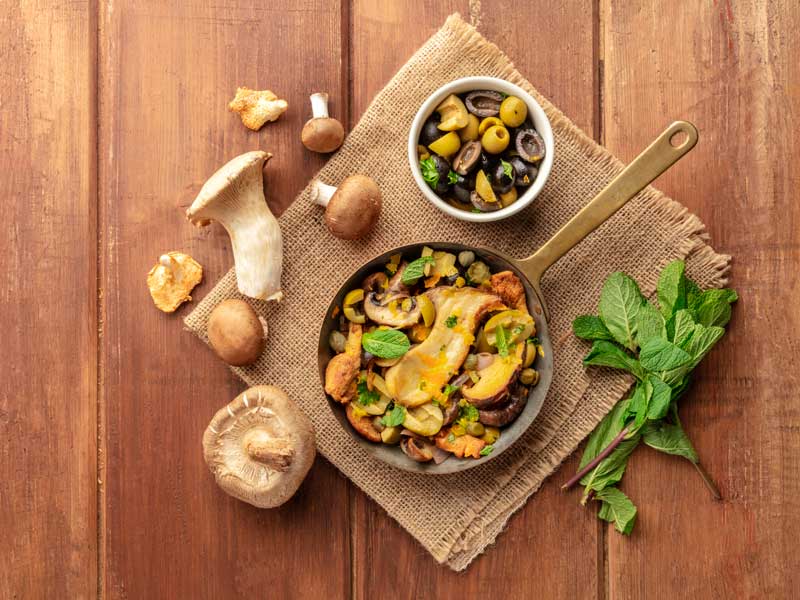
The nutritional value of mushrooms in your diet is greater than you think.
Mushrooms are dense with nutritional value and a variety of textures and flavors… including chicken, lobster and shrimp! Read the full article...
